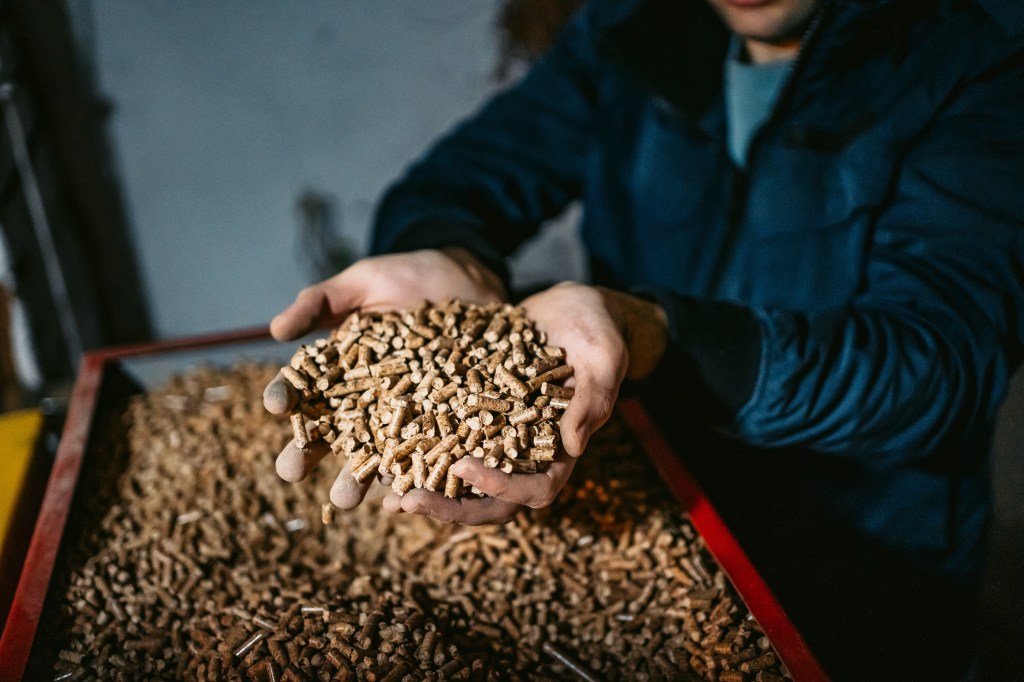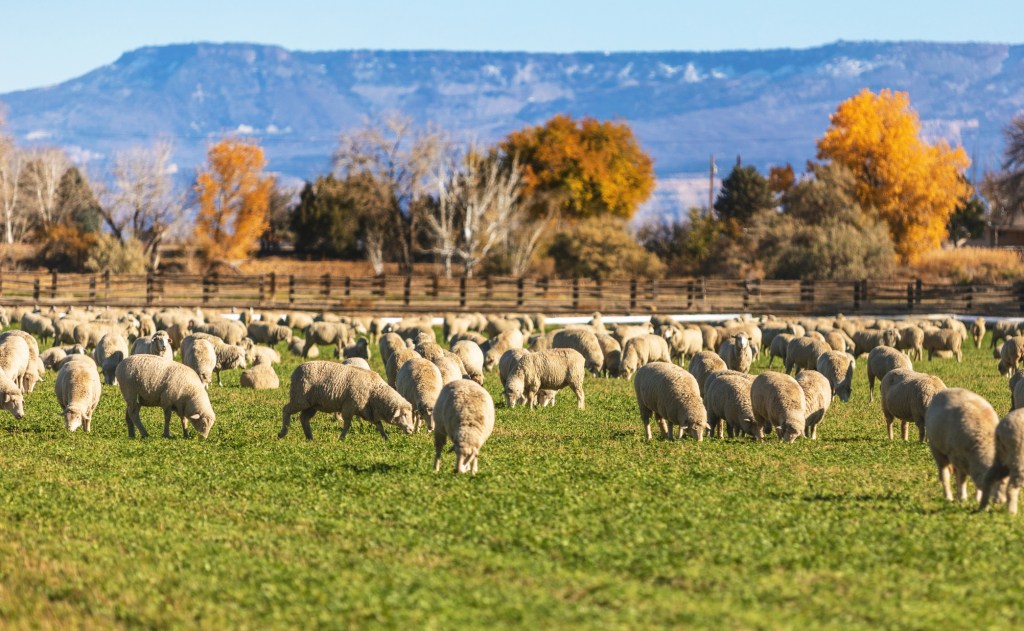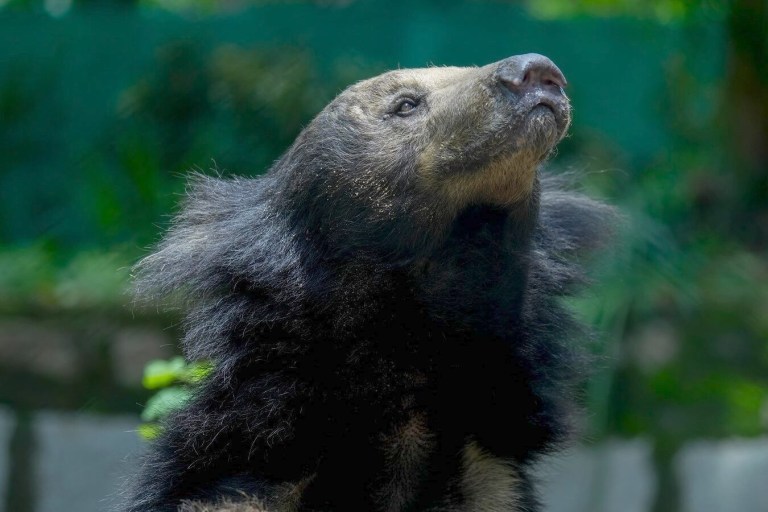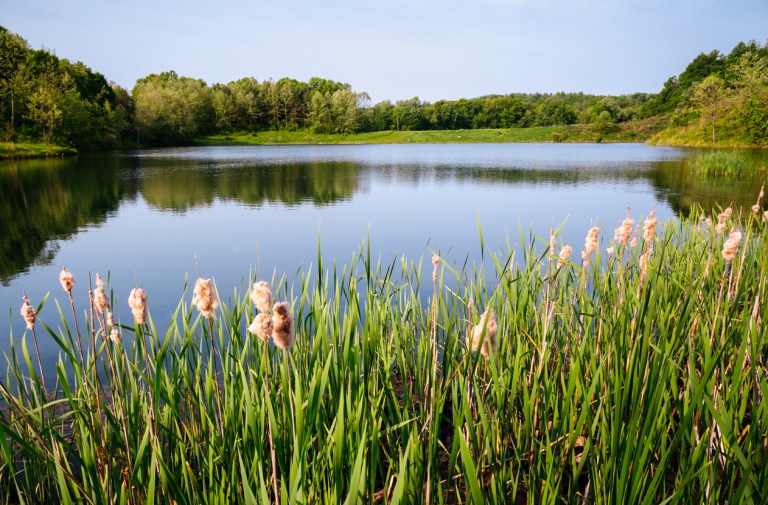Can wool save water? Sheep ranchers certainly think so. Over the past decade, an increasing number have begun turning their “waste wool” — aka the low-quality wool that can’t be used for fabric and typically gets tossed — into fertilizer.
Unwashed raw wool boasts plenty of nutrients plants love, like nitrogen and potassium, making it a prime candidate for providing soil nourishment. Plus, it can absorb up to 35% of its dry weight in water, more than any other fiber, according to CSIRO’s Textile and Fibre Technology division. That means wool can hold onto the moisture crops need, and as a result, farmers can water less.

Alicia and Ben Rux, owners of a Wyoming sheep ranch, have been putting these properties to use since 2022. Left with heaps of waste wool, the pair started creating fertilizer pellets with it, and have since helped half a dozen other farmers do the same. “We always have sustainability in the back of our minds,” Alicia told On Land, “and how to use something that maybe isn’t being utilized.”
Ventures like these help solve the problem sheep ranchers face of what to do with all that extra, unusable wool. According to some industry estimates, around 50% of all sheered sheep wool in the U.S. is likely wasted. Some farmers make attempts to dispose of it responsibly, but it often gets burned or ends up in landfills.
“A lot of people drag it out to the far corner of their farm or stuff it in bags and leave it in the corner of the barn ’til it gets to take up so much room, they don’t know what to do,” Kimberly Hagen, former grazing specialist at the University of Vermont, told Modern Farmer. “For most people, it just doesn’t even pay to drive to one of these collection sites. It’s just not worth it.”
But there’s a growing body of evidence showing that turning that leftover wool into fertilizer is worth it. For instance, one study demonstrated that sites whose vegetables were fertilized with wool pellets yielded as much or more produce than ones with regular fertilizer. Wool not only infuses the soil with beneficial nutrients, but because of the keratin in the material, can also take up to a year to decompose completely — which helps the soil maintain a consistent nutrient supply.
“What’s nice about the wool pellet is because it’s so fibrous, it’s a slow release; it really slows down that process,” Hagen added.
And it’s not just farmers who are creating innovative solutions out of wool. Led by entrepreneur Anna-Liisa Palatu, Woola transforms the material into a sustainable, plastic packaging alternative. In a similar vein, French company Traille gives wool-based packaging a fancy upgrade, fashioning casings for bottles of Château Cheval Blanc, and is also developing a wool alternative to the polyester filling used in furniture and garments.
But while wool fertilizer clearly holds promise, it may take a while for the incipient market to truly take off. According to sheep rancher Robert J. Andrews, who’s been selling wool pellets since 2024, farmers are going to have to see it to believe it. “Folks in agriculture are usually pretty based in tradition,” he told Time magazine, noting that many operate with a “what worked before will work again” mindset. “We need a shift in legacy producers, but a shift takes understanding, and the proof must be in the pudding,” he said.

When that shift does occur, there’s a massive well of wool just waiting to be repurposed. The American Sheep Industry Association estimates that U.S. ranches hold about 5 million sheep and lamb — and as Brent Roeder, Montana State University extension sheep and wool specialist, told Time, “We’ve really just scratched the surface of wool’s uses.”
RELATED: Sustainable Fish Leather, Made From Invasive Species, Could Help Save Coral Reefs












